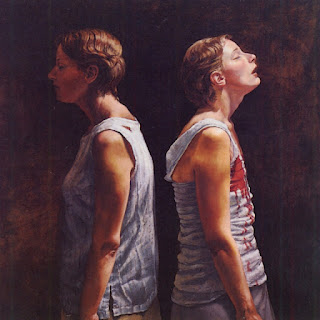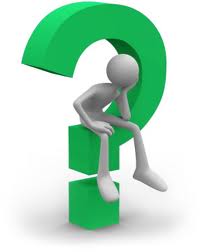 |
| A photo I took of Pope Benedict in Malta, April 2010 |
Shortly before midday on Monday Pope Benedict XVI announced his resignation which will officially take effect at the end of the month, at 8pm on February 28th. As people around the world struggle to come to terms with the surprise announcement, the question on everyone’s lips is ‘why did the Pope take this extremely unusual step of standing down as head of the Catholic Church?’
The statement of his resignation, read by the Pope in Latin, states clearly that his “advanced age” and his declining physical strength “are no longer suited to an adequate exercise of the Petrine ministry.” Pope Benedict also alluded to the possibility of his resignation in the book ‘Light of the World’, a series of answers to questions posed to him by German journalist Peter Seewald in 2010. In his address to the college of cardinals on April 22nd just three days after his election, the Pope spoke clearly about being “aware of my personal limitations and limited abilities”. Nevertheless he described his attitude as one of inner dedication, describing the task ahead as “a service to be rendered with simplicity and willingness, imitating our Teacher and Lord who did not come to be served but to serve.”
As the head of the Vatican press office, Fr Federico Lombardi, stressed to journalists on Monday, Joseph Ratzinger’s decision is the fruit, not of any external pressures but simply the desire to remain obedient to the word of God, whom he intends to continue serving “through a life dedicated to prayer” and reflection. A conclave would elect a new Pope, possibly before Easter.
 |
| Another of my photos of Pope Benedict XVI |
These are the words of the Pope addressed to the cardinals this morning, translated into English: “
"Dear Brothers,
I have convoked you to this Consistory, not only for the three
canonizations, but also to communicate to you a decision of great
importance for the life of the Church. After having repeatedly examined
my conscience before God, I have come to the certainty that my
strengths, due to an advanced age, are no longer suited to an adequate
exercise of the Petrine ministry.
"I am well aware that this ministry, due to its essential spiritual
nature, must be carried out not only with words and deeds, but no less
with prayer and suffering. However, in today's world, subject to so many
rapid changes and shaken by questions of deep relevance for the life of
faith, in order to govern the bark of Saint Peter and proclaim the
Gospel, both strength of mind and body are necessary, strength which in
the last few months, has deteriorated in me to the extent that I have
had to recognize my incapacity to adequately fulfill the ministry
entrusted to me.
"For this reason, and well aware of the seriousness of this act, with
full freedom I declare that I renounce the ministry of Bishop of Rome,
Successor of Saint Peter, entrusted to me by the Cardinals on 19 April
2005, in such a way, that as from 28 February 2013, at 20:00 hours, the
See of Rome, the See of Saint Peter, will be vacant and a Conclave to
elect the new Supreme Pontiff will have to be convoked by those whose
competence it is.
"Dear Brothers, I thank you most sincerely for all the love and work
with which you have supported me in my ministry and I ask pardon for all
my defects. And now, let us entrust the Holy Church to the care of Our
Supreme Pastor, Our Lord Jesus Christ, and implore his holy Mother Mary,
so that she may assist the Cardinal Fathers with her maternal
solicitude, in electing a new Supreme Pontiff.
"With regard to myself, I wish to also devotedly serve the Holy Church of God in the future through a life dedicated to prayer."
The last Pope to resign was almost six hundred years ago. It was Pope
Gregory XII, who, in a very sacrificial gesture offered to resign so
that the council of Constance could assume his power and appoint a new
Pope, and in so doing bring an end Great Western Schism. So that was the
last pope who actually resigned. So this is quite an unprecedented
event. At the end of the 13th century, a very holy hermit
named Peter was elected as Pope Celestine V in order to break a deadlock
in the conclave that had lasted nearly three years. He was elected
because of his personal holiness, sort of a unity candidate. And once he
got there, being a hermit, not used to the ways of the Roman Curia, he
found himself somewhat unsuited to the task, that it wasn’t just
holiness but also some shrewdness and prudence that was also required.
So within six months he knew that he was really unequal to the task, and
so he gathered the cardinals together in a consistory, and he announced to the cardinals his
intention to resign. Because of the Pope’s position as the supreme
authority in the Church, Celestine declared that the pope could freely
resign, that it was permissible, and that, because, as supreme
authority, it did not have to be accepted by anyone. It just had to be
freely manifested, as it says today in canon 332 of the Code of Canon
Law. As long as it is freely and properly manifested it is to be
accepted by no one. The Pope is the supreme authority. Because of this,
his successor Boniface VIII in his redaction of Canon Law called the Liber Sextus inserted this constitution of Celestine V and it became normative Catholic law.
On Friday, Benedict raised some eyebrows by having a rare private audience with the Dean of the College of Cardinals, the 85 year-old Italian Angelo Sodano, the figure who would be responsible for the convoking of a papal election. The departing pontiff ostensibly communicated his plan to the Cardinal-Dean at that point. Under the operative norms governing Conclaves in the wake of a Pope's death, the voting college is to start the election between 15 and 20 days from the moment of vacancy. In this case, however, the traditional novemdiales – the nine days of official mourning before the election – would not apply.
Now comprised of 118 voting members younger than 80, the College as a whole – retirees included – governs the church during a papal interregnum.
















































